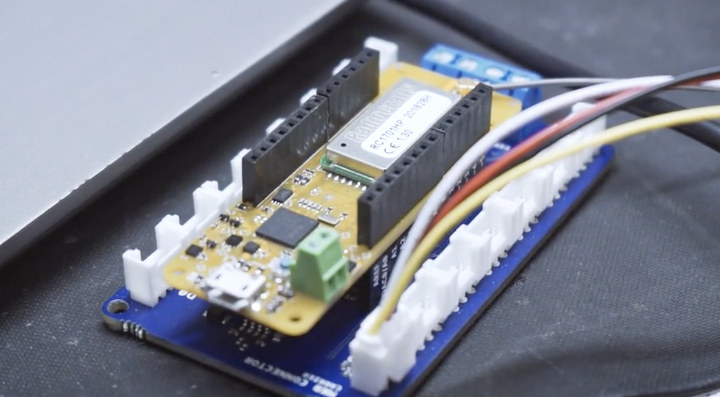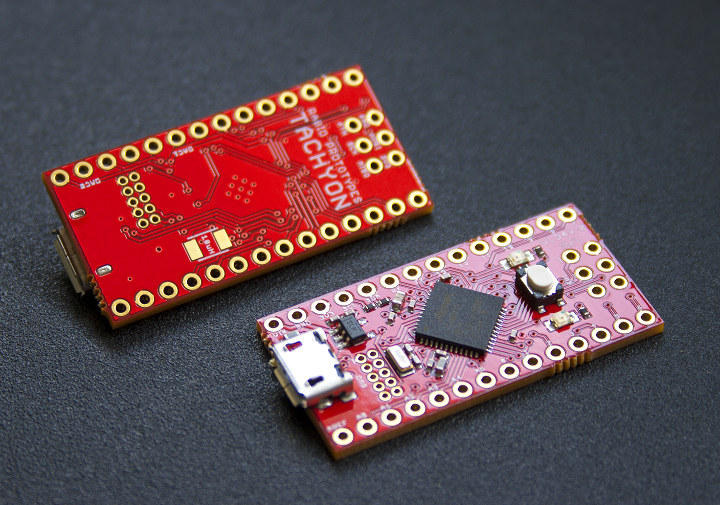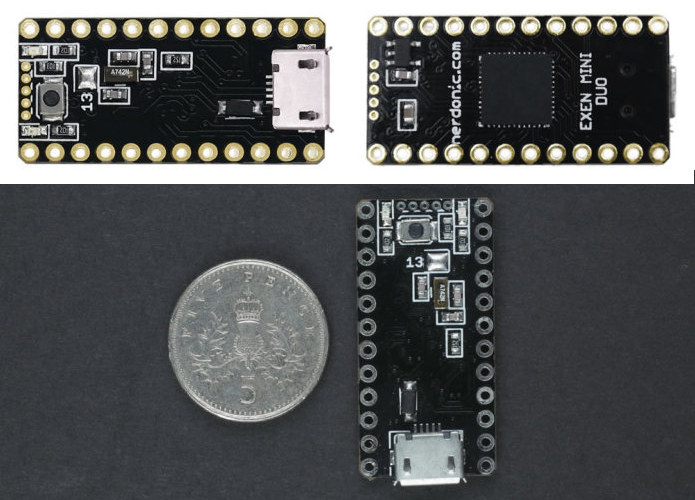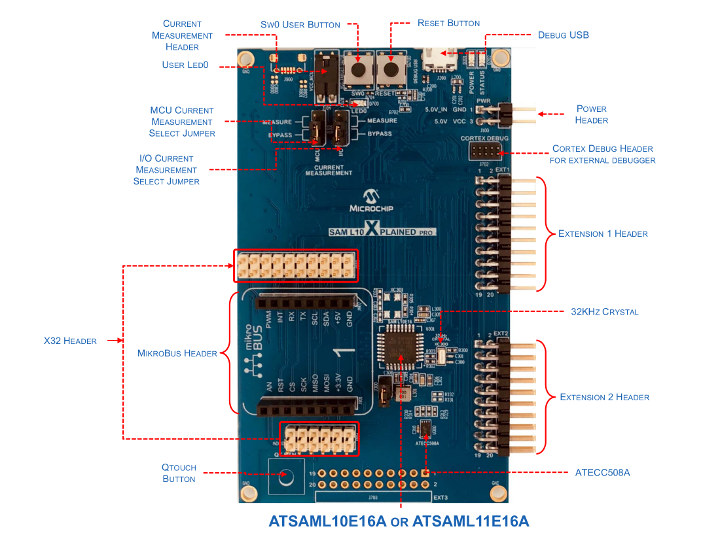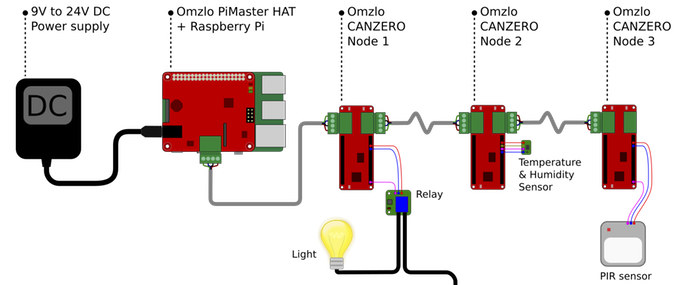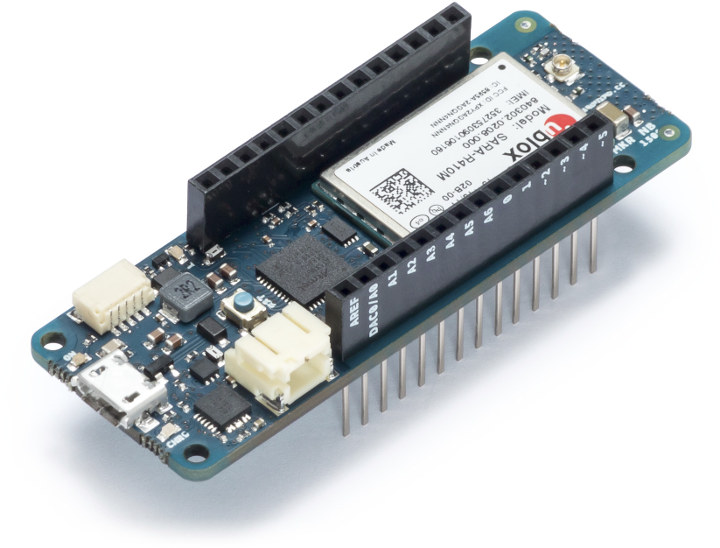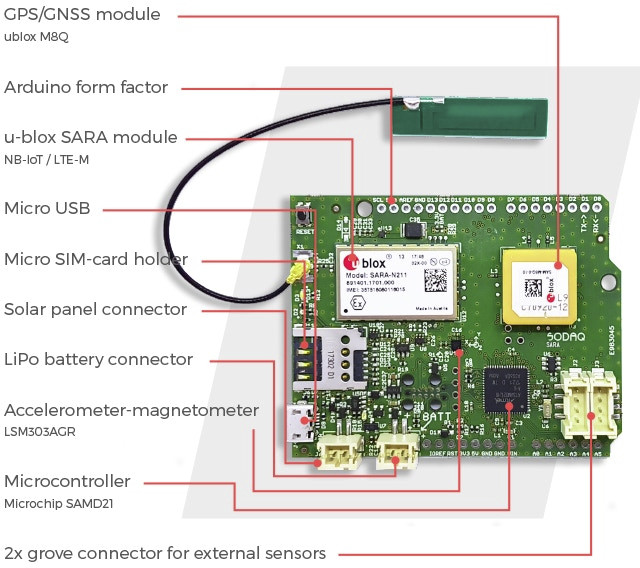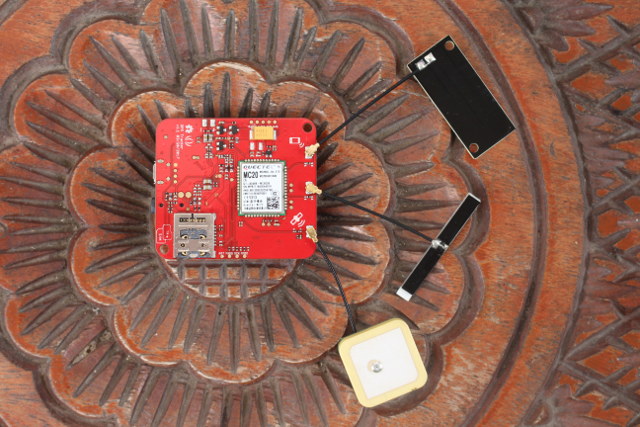LoRa, Sigfox, and NB-IoT are probably the most popular low power long range wireless protocols for the Internet of Things, but there are several others, including one I had never heard of: Wize. The Wize Low Power Wide Area Network (LPWAN) protocol has been created in late 2017, leverages the “old and refurbished” 169 MHz frequency, support up to 20 km range, 20-year battery life, and is managed by the Wize Alliance with members including STMicroelectronics, Suez, Sagecom, Renesas, Analog Devices, Silicon Labs and many others. Despite being a recent protocol, the table below claims 3 millions of deployment for Wize, and showcases some of differences against LoRa, NB-IoT, and Sigfox. You may be confused as how the standard was created in at the end of 2017, but there are so many deployments, and 13 years experience. It appears Wize is derived from the older EN 13757 standard for gas […]
Tachyon Arduino Zero Compatible Board Features Microchip SAMD51 Arm MCU @ 120 MHz (Crowdfunding)
Most Arm based Arduino compatible boards come with a Microchip SAMD21 Arm Cortex-M0+ MCU clocked at up to 48 MHz since this is the microcontroller found in the official Arduino Zero and MKRZero boards and comes with proper support in the Arduino IDE. But last year, Microchip introduced SAMD5x Arm Cortex-M4 microcontroller family which offers devices that are pin-to-pin compatible with SAMA2x microcontrollers but with better performance, and more memory and storage. So the guys at Rabid Prototypes decided to make Tachyon, a tiny Arduino Zero compatible board based on SAMD51 MCU for people wanting more oomph out of their Arduino board. Tachyon board specifications: MCU – Microchip ATSAMD51G18A Arm Cortex M4F @ 120 MHz with 256KB flash, 128 KB RAM I/Os Digital I/O pins – 14x w/ 12x PWM Analog input pins – 6x 12-bit ADC channels Analog output pins – 2x 10-bit DACs Operating voltage – 3.3V I/O […]
Exen Proto Arduino Compatible Board is based on Microchip SAMD21 MCU (Crowdfunding)
Nerdonic launched Exen Mini last year as the world’s smallest 32-bit Arduino compatible board, and getting the smallest board possible is very good for some projects, but so not much for other as Exen Mini is limited to just 8 I/O pins. So the company made another larger board called Exen Proto based on the same Microchip SAMD21 Cortex M0+ microcontroller, but offering more I/Os. Exen Proto specifications with difference against Exen Mini highlighted in bold: MCU – Microchip SAMD21 Cortex M0+ MCU @ 48 MHz with 256KB flash, 32KB SRAM I/Os via 2x 12-pin 2.54mm pitch headers Up to 20x digital I/O Up to 19x PWM Up to 11x analog (ADC) up to 12-bit resolution 2x UART Up to 5x I2C 1x reset Limits – 3.3V, 7mA USB – 1x micro USB port Programming – Via micro USB port or SWD header Misc – Power LED, user LED, button […]
Microchip Unveils SAM L10 & SAM L11 Arm Cortex-M23 MCU Families with Arm TrustZone for Armv8-M
Microchip has recently announced new SAM L10 and SAM L11 Arm Cortex-M23 MCU families, with the SAM L11 family featuring Arm TrustZone for Armv8-M that provides hardware isolation between certified libraries, IP and application code. SAM L10 & SAM L11 MCU Families Key features: Arm Cortex M23 Core @ 32 MHz Up to 64 KB Flash and 16 KB SRAM picoPower Technology less than 25 μA/MHz in active mode less than 100 nA in sleep mode Fast wakeup time: 1.5 μS Flexible power saving features Enhanced Peripheral Touch Controller (PTC) with improved water tolerance, noise immunity and responsiveness Security (for SAM L11 only) Chip-level tamper resistance Arm TrustZone technology Secure boot Secure bootloader Crypto accelerators Secure key storage Op amp ADC and DAC Package – VQFN32, TQFP32, WLCSP32, VQFN24, SSOP24 Microchip SAM L10 MCU achieved a ULPMark score of 405, or over 200 percent better performance compared to the nearest […]
NoCAN IoT Platform Leverages Raspberry Pi & Arduino for CAN Bus Projects (Crowdfunding)
Many IoT projects rely on wireless connectivity through WiFi or Bluetooth, but in some cases it may be more reliable and convenient to use wired connectivity. The CAN Bus is a little like a low bandwidth Ethernet PoE solution for IoT, as it allows to transfer data over a serial connection while provided power at the same time, and can be daisy chain to support multiple boards. Omzlo’s NoCAN IoT platform provides a CAN bus solution leveraging Raspberry Pi 3 board through their PiMaster HAT acting as a CAN bus gateway, and Arduino compatible CANZERO boards to which you can connect sensors and actuators. Omzlo PiMaster HAT specifications: MCU – STMicro STM32F042 Cortex-M0 32bit ARM MCU – 48Mhz. Networking – 125000 bps CAN bus up to 300 meters range GPIO – Communicates with Raspberry Pi through SPI + GPIOs Security – Smart power switch with over-current protection. Power Supply – […]
Arduino Introduces Two New IoT Boards – MKR WiFi 1010 (ESP32) and MKR NB 1500 (NB-IoT + eMTC)
Arduino introduced its MKR family of breadboard compatible maker boards with MKR1000 featuring an Atmel SAMD21 microcontroller combined with a Microchip WINC1500 WiFi module. The board was followed by MRKZero without wireless connectivity, then MKRFOX1200 Sigfox board, and finally MKR WAN 1300 & MKR GSM 1400 boards at the end of 2017 with LoRaWAN and 3.75G cellular connectivity. The company has now launched two new boards: Espressif ESP32 based MKR WiFi 1010 with WiFi and Bluetooth, and MKR NB 1500 equipped with an NB-IoT & LTE CAT M1 module. Arduino MKR WiFi 1010 MKR WIFI 1010 is an evolution of the MKR1000 board, and is equipped with a U-Blox ESP32 module. Preliminary specifications: MCU – Microchip SAMD21 Cortex-M0+ MCU @ 48 MHz with 32KB SRAM, 256 KB flash memory Wireless Connectivity – 2.4 GHz 802.11 b/g/n WiFi and Bluetooth 4.2 LE via U-blox NINA-W10 Series module based on ESP32 processor. […]
SODAQ SARA is an Arduino Compatible Cellular IoT Board with LTE-M, NB-IoT, and GNSS (Crowdfunding)
There really seems to be a push for cellular IoT those days, with new hardware coming up every week. Following up on their NB-IoT shield for Arduino last year, SODAQ has now launched two versions of SARA boards based on u-blox SARA LTE-IoT modules, and u-blox M8Q GPS/GNSS module. Both boards are Arduino compatible thanks to a Microchip SAMD21 MCU, and while u-blox SARA board follows the Arduino form factor, u-box SARA SFF is much more compact (50×25.4 mm) and potentially easier to integrate into a project or product. Another pretty unique feature (AFAICT) is that you can power the board directly with a solar panel. u-blox SARA board specifications: Wireless module (three options) with external antenna: SARA-N211 NB-IoT, band 8 and 20, for the European and African market SARA-R410M Dual mode LTE-M and NB-IoT module for all global bands SARA-R412M Triple mode module with LTE-M, NB-IoT and 2G for […]
Giveaway Week – Wio GPS Tracker Board
It’s Friday, and the fifth day of giveaway week on CNX Software. Today, I’ll be giving away Wio Tracker, an Arduino compatible board based on Microchip / Atmel SAMD21 ARM Cortex M0 MCU with GPS, Bluetooth, 2G GSM/GPRS connectivity. My review of the board was rather negative, as I only managed to make Bluetooth 3.0 work while following the documentation as it was back in May. Since then the documentation seems to have improved, and other people have been more successful than me, and made the blink LED, and GPS samples to work. This version of the board only support 2G, so make sure it is still supported in your region/country. To enter the draw simply leave a comment below. Other rules are as follows: Only one entry per contest. I will filter out entries with the same IP and/or email address. Contests are open for 48 hours starting at […]


